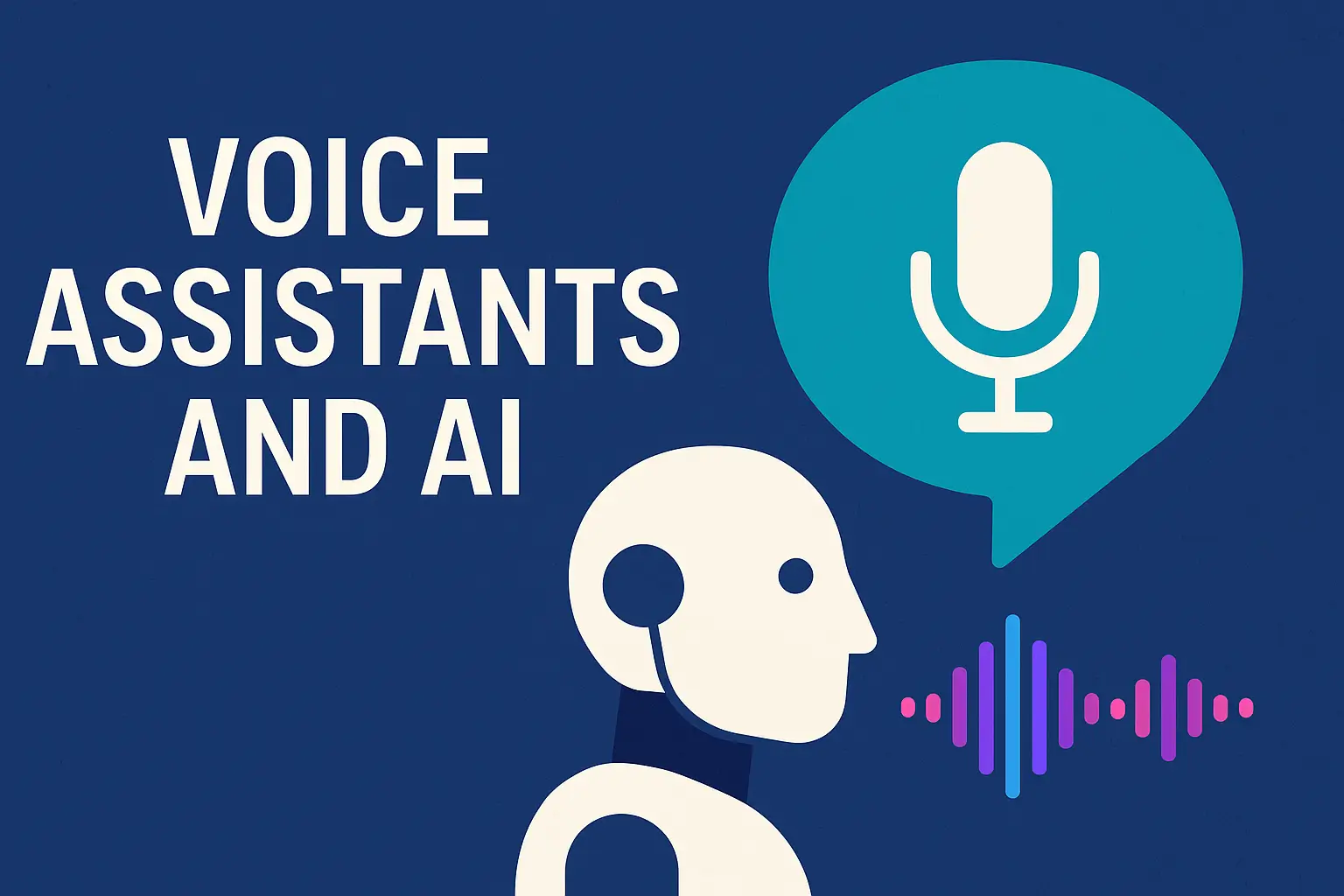Voice assistants like Siri, Alexa, and Google Assistant have become everyday tools—setting reminders, answering questions, and controlling smart devices with simple voice commands. But how do these assistants actually understand what we say and respond in a meaningful way?
In this article, we’ll explore the AI technologies behind voice assistants, how they process language, and the real-world impact of voice interfaces in homes, workplaces, and beyond.
What Are Voice Assistants?
Voice assistants are AI-powered systems designed to understand spoken language, process requests, and deliver responses or perform tasks. They combine several technologies including:
- Automatic Speech Recognition (ASR): Converts spoken words into text
- Natural Language Understanding (NLU): Interprets the meaning of that text
- Natural Language Generation (NLG): Constructs appropriate replies
- Text-to-Speech (TTS): Converts text back into spoken voice
Together, these technologies enable a seamless voice interaction between humans and machines.
How Voice Assistants Work: Step by Step
1. Wake Word Detection
Most voice assistants are activated with a wake word (e.g., “Hey Siri” or “Alexa”). The device is always passively listening but only begins processing once the wake word is detected.
2. Speech Recognition
After activation, the assistant records your spoken command and uses ASR to convert the audio into text using deep learning models trained on thousands of voices and accents.
3. Natural Language Processing (NLP)
Once your words are transcribed, NLU kicks in to:
- Understand your intent
- Identify relevant entities (e.g., time, place, names)
- Match your request with the correct action
4. Decision Making and Task Execution
The assistant accesses internal databases or online services to fulfill your request—whether it’s setting an alarm, fetching weather info, or playing music.
5. Response Generation
The assistant uses NLG to construct a human-like response, and TTS to read it out loud.
Example:
You say: “What’s the weather like in New York tomorrow?”
The assistant:
- Converts voice to text
- Understands the query and location
- Retrieves the forecast
- Generates a spoken answer like: “Tomorrow in New York, it will be partly cloudy with a high of 76 degrees.”
Key Technologies Behind Voice Assistants
- Deep Learning: Powers ASR, NLU, and TTS models
- Neural Networks: Especially recurrent and transformer-based models
- Speech Datasets: Massive collections of recorded speech and text used for training
- Cloud Computing: Processes complex requests in real-time
- Personalization Algorithms: Learn from user behavior to tailor responses
Popular Voice Assistants in 2025
| Assistant | Platform/Device | Strengths |
|---|---|---|
| Alexa | Amazon Echo, Fire TV | Smart home integration, skills |
| Google Assistant | Android, Nest, Pixel | Search capability, contextual memory |
| Siri | iPhone, iPad, Mac, Apple Watch | Ecosystem synergy, privacy focus |
| Cortana (limited) | Microsoft devices | Productivity features (now limited use) |
| Bixby | Samsung devices | Smart device control |
Real-World Use Cases
- Smart Homes: Controlling lights, thermostats, security systems
- Productivity: Setting timers, reminders, meetings
- Shopping: Ordering products, adding to shopping lists
- Entertainment: Playing music, videos, podcasts
- Accessibility: Helping users with mobility or visual impairments navigate technology
Advantages of Voice Assistants
- Hands-Free Convenience: Ideal for multitasking and accessibility
- Faster Interactions: Speaking is quicker than typing
- Personalized Experiences: Tailored suggestions based on usage history
- Integration: Works with smart devices and third-party apps
Limitations and Challenges
- Accuracy Issues: Background noise, accents, or unclear speech can affect understanding
- Privacy Concerns: Continuous listening raises questions about data usage and security
- Limited Context Awareness: Assistants still struggle with complex, multi-turn conversations
- Dependence on Internet: Most require cloud access for processing
The Future of Voice Assistants
- More Natural Dialogue: Ongoing improvements in language models for smoother interactions
- Emotion Recognition: Detecting mood or tone for more empathetic responses
- Multilingual Capabilities: Seamless language switching and translation
- Offline Functionality: Smarter on-device processing for privacy and speed
- Expanded Use in Business: AI-powered voice support in customer service and enterprise tools
Final Thoughts: A New Era of Interaction
Voice assistants are more than just digital novelties—they represent a shift in how we interact with technology. As AI continues to evolve, voice interfaces will become more natural, more responsive, and more integrated into our daily lives.
For businesses and consumers alike, understanding how these systems work is key to making the most of them—whether it’s improving efficiency, enhancing accessibility, or simply making life a bit more convenient.
